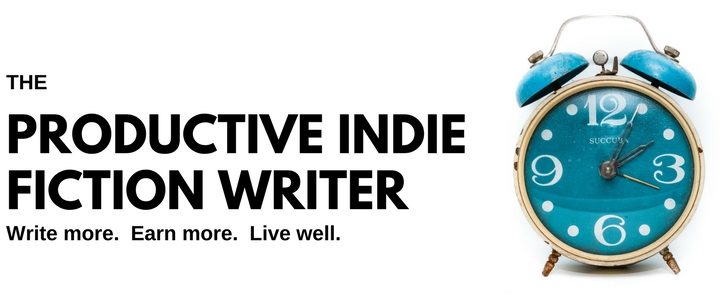
Last week I spoke at length about stashing your time–well, stashing anything you can, actually, as a hedge against the vagaries of the publishing industry.
Stashing time is a matter of deliberately working ahead of your production schedule. (And if you don’t have a production schedule–a timetable of releases–then you’re missing the backbone of your business. Honestly.)
Sometimes, getting ahead of your schedule is accidental. A book just falls out of you in record time (I love it when that happens), or it ends up shorter than you anticipated, but the story is all properly told, so the book is done.
If you were to finish a book four days early, for example, then you could stash that time as sick and play time, against future events. Or you could cut the time in half, spend two days writing short stories, and stash the other two days by starting the next book two days ahead of schedule.
There’s a third possible use of that bonus time that I didn’t include last week because it’s a topic on its own: Transition Time.
What is Transition Time?
Some writers — and you may or may not be one of them–need complete downtime between one book and the next. Transition Time is a palate cleanser that clears their mind and gently turns their thoughts away from the characters and situations of the last book, toward the new characters that they don’t yet know, and their stories.
Why Would You Need Transition Time?
If you’ve just finished writing a book that was particularly challenging, you might find it difficult to let go the reins you’ve been clenching for days, weeks, possibly months.
Or, you may have just finished a book with characters and stories you just adore, and can’t let go of, either. You miss them.
As the next book on your schedule has characters you don’t know well (even series characters’ story arcs are a mystery until you plot them), you aren’t yet invested in their woes and adventures. The next book doesn’t hold nearly the same degree of alure as the book you’ve just finished.
Because the next book isn’t pulling you to the desk each day, you may find yourself dragging your heels, wanting to go back to the last book…or simply not write/plot at all.
Transition time helps you disassociate with the last book, and ease you into the next one.
You may not need transition time for every single book. It could be only the tough or the delightful books you need to divorce. Your daily writing journal and your writing schedule will clue you in to whether you need transition time for every single book or not.
If you’ve never heard of transition time, and don’t think you need it, some of the activities below might be useful or helpful at any other time, for they are all creativity enhancers.
How to use Transition Time
The idea is to rid your subconscious of the old book’s characters and situations. You need time to do that–and sometimes a day is enough. Some writers like to take a whole week or even more. It’s up to you, but your rate of releases will also dictate how much time you can spare to transition.
Transitioning is a three step process:
- Clear the mind.
- Refill your creative well.
- Turn toward the next book.
Instead of writing for that day/week(s), you can do a range of activities that help your mind move on:
- Meditation
- Journalling
- Exercise (especially walking outside)
- Sleeping
- Meeting with friends who are not writers (or meeting with writers and not talking shop)
- Window Shopping. (or actual shopping, if your bank account can stand the hit).
You can and should experiment with these mind-clearing activities to see what works well for you.
And then there are “topping up” activities, that fill the creative well you’ve just drained finishing the last book:
- TV/Movie watching (low quality, but it works)
- Creative hobbies (making things, especially)
- Creative courses.
- Consuming other creative endeavours: art, music, poetry. Craft shows.
- Reading, especially books completely outside your genre, including non-fiction that is not about writing or publishing.
- Visiting museums.
- Watching documentaries — the more obscure and unexpected the subject, the better.
- People-watching (especially if you take sketchbook notes).
You should also include time to ruminate about the next book and what you know about it so far.
- Free writing or journaling about the book ahead.
- What do you know about it, so far?
- What are your hopes and expectations for the story?
- Write a paragraph or two about the most thrilling/intense moments of the story. I you don’t know of any yet, speculate.
- Write a few paragraphs about your main characters. What do you like about them? What are their major crises and arcs in the story?
- Set up a storyboard for the new book
- Images of the main characters
- Images of places featured in scenes
- Other mood elements you want to capture.
You can use all of these ideas, or create your own, or just pick one or two from each phase.
Experiment and see which ones work for you, which complement each other, and what combinations are the most effective.
If you use the same set of activities every single time you transition to a new book, you will be setting a habit that will prime your mind and direct you into the plotting and writing without struggle.
Experiment to see if you benefit from Transition Time.
Transition Time is just that: Time. You’re not writing or producing during transition time, but it can have benefits that make up for the time lost. If you need transition time, it’s possible you’re already creating the transition period by not starting the new book when you should. If you regularly dither and procrastinate at the beginning of a book, then transition time may be the tool you need to minimize the time you waste while avoiding starting.
As I mentioned at the beginning of the post, if you find yourself with a bit of spare time before the next book is due to start, you can use some or all of it to try these transition activities and see if they help.
If you find Transition Time useful, you can actually schedule it into your Production Schedule and reap the rewards.
Do you already use transition time to get yourself into the next book? What activities work well for you? Add your suggestions to the comments, below, for other writers to consider including in their transition time.
[fusion_separator style_type=”shadow” hide_on_mobile=”small-visibility,medium-visibility,large-visibility” class=”” id=”” sep_color=”” top_margin=”” bottom_margin=”” border_size=”” icon=”” icon_circle=”” icon_circle_color=”” width=”” alignment=”center”][/fusion_separator]
.![]()

Pingback: Weekly Log – December 17, 2019: – The Productive Indie Fiction Writer